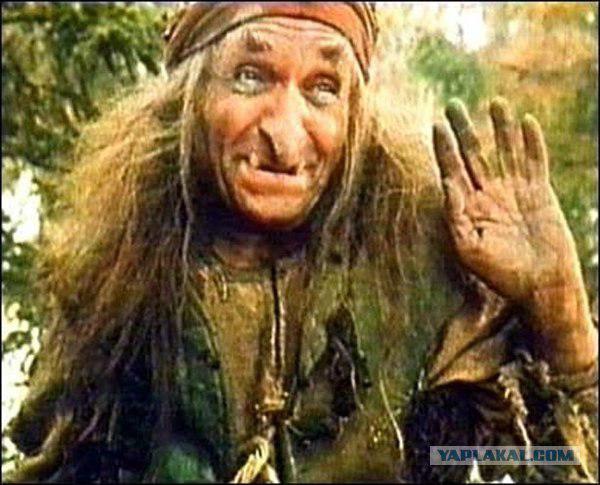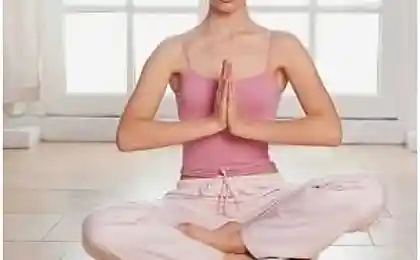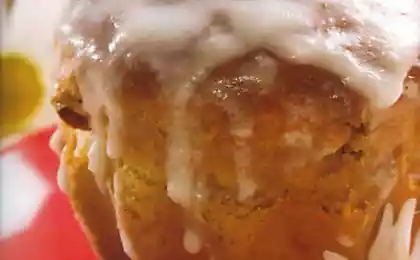792
Baba Yaga
7 photo
- Let's talk about the tale.
Where does it begin?
Correctly.
With some tasks, the performance of which the main character is sent (Ivan: prince, a fool, and so on). Hero to send requests to provide it with anything. Among the various unnecessary items are key staff, shoes and food ("Well, Ivan Tsarevich, look for me in the seventh kingdom, the iron boots and wear three iron Prosvirov sglozhi"). It is these items supplied for the path of the dead to the other world.
I wonder?
And now the most unusual: a tale reflects mainly the idea of death, and not any other. That these ideas were so tenacious and capable of artistic treatment.
The death of a fairy tale is the link between it and the once widespread rite is closely related to notions of death: rite of youth at puberty.
Rite of Passage
Dedication - is one of the institutions peculiar to tribal system. This rite of youth introduced to the family association, and became a full member of it. It was assumed that during the ceremony the boy died and then resurrected again have a new man (temporary death). The death and resurrection cause actions, depicting absorption devouring boy monstrous animals. It is as if these animals are swallowed and return, ie. E. Vyharkivalsya or erupted. To perform this ritual is sometimes lined up special homes or tents, animal-shaped, and the door was a mouth. Rite has always occurred in the depths of the forest or bush, in strict confidence, and was accompanied by bodily tortures (cutting off fingers, knocking out teeth, and others.). Another form of the time of death is expressed in the fact that the boy is symbolically burned, boiled, fried, izrubali into pieces and revived again (to you and to offer Baba Yaga Ivanushka willingly climb into the oven). Risen received a new name, applied to the skin signs covered rite. The boy took a more or less prolonged and severe school. He taught methods of hunting, reported the secrets of religious, historical information, and so on. D. He passed a hunter and a member of the school community, school dances, songs, and all that seemed necessary in life.
Here is the Prince Ivan, King-the King!
Let's start our journey with Prince Ivan in ...
Dense forest

Wood - a constant accessory Yagi. Hero tales, whether prince or driven stepdaughter, invariably in the forest. Descriptions of his fairly conventional: the dense, dark, mysterious. He is impervious. This kind of network, catching aliens. And to get out of it, the hero gets from Yagi horse on which he flies through the forest. This fairy-tale forest surrounds the kingdom of the dead through a road leads into another world - this theme can be found in the myths of different peoples.
In the forest, as of course, the hero encounters a hut on chicken legs.

He initially knows he must get her to turn around, which you need to say the magic word, "stand back to the woods, to me before." Why should we turn the hut, and simply can not enter? Often before Ivan smooth wall - "without windows, without doors" - the entrance on the opposite side. But why not get around the cabin and did not enter from the other side? Obviously, this is impossible. Obviously, a hut stands on any such face, through which Ivan can not transcend. To get to this line is possible only through the hut, for which it must turn. Open sides face the tridesyatom kingdom closed - to the world of Ivan. This hut - outpost. The hell he gets no sooner than would be subjected to interrogation and trial, if he could follow along.
This boundary position hut sometimes emphasizes: "In one step - dense forest, and near the forest stands a hut", "Cabin worth - and then no progress no - one outer darkness; I can not see anything. "

Why hut on chicken legs?
1) In the myths and rituals of peoples at an earlier stage of development, hut also has the shape of an animal, often does no cabin, but there is only an animal, or a hut has pronounced zoomorphic features. Hence - "Kuryi legs" and a variety of animals living in the hut.
To pass, the hero is necessary to "appease" the animals or to say the magic word (already familiar to us "turn his back to the forest, to me before").
"Appeasement" of animals - is a form of sacrifice, has agricultural origin "... whatever your dog will tear - you throw them bread; there you will be the cat's eyes tear up - you give him a ham. " However, the magic word is more ancient than the magic of sacrifice.

2) As an explanation chicken legs give a different version: the Slavs VI-IX centuries. there was a funeral ceremony to burn the dead and their ashes put in a pot, which was kept in a tiny little house-elf standing on poles in the woods. And the name "Kuryi legs" is derived from "Qurna", that is fumigated with smoke pillars on which the Slavs and set said "the house of death"

You first watered, fed, and then ask!
Another detail, indicating that the events taking place in the realm of the dead.
At the beginning of the hero Yaga begins to inquire where he "keeps the path." On that meets the requirements of the first "water-feed" and then inquire.
Food, refreshments certainly mentioned not only at a meeting with Yaga, but also with many equivalent to her characters. In cases where the prince enters the hut, and Yagi yet, he finds a set table and were treated without it. Even the cabin is sometimes fitted storyteller for this function: it is "backed cake", "indoor pancake", which corresponds to the Western fairy tales "Gingerbread House".
Note that this is a constant, a typical feature of Yagi. She feeds, treats hero. The food here has a special meaning. A person who wants to get into the realm of the dead, invited to a special kind of food. Food for the dead.
Join the food assigned to the dead, permanently attached to the alien world of the dead. Hence the ban on touching the food of the living. Dead not only disgusted by this food, it should join it as much as live food provides a living physical strength and courage, the food of the dead gives them specific magical, magical power, the desired dead. Requiring food hero thus shows that he is not afraid of the food that he is entitled to it, that it was "real" dead.
Do not confuse the "food of the dead" with a memorial meal. But the memorial meal, in any case, the Slavs, consists of grains (kutia), eggs, symbolizing the constant rebirth of life. It is for the living, the mourners of the dead, and, as it focuses on the eternity of life and its constant revival.
The motive of the hero Yaga treats on his way tridesyatom kingdom was formed on the basis of the submission of the magic food, received the dead on his way to the underworld.

Let that image Yaga fairy tales appears most often in the following manifestations:
- Yaga - giver, to whom the hero. She interrogates him, he gets from her horse, rich gifts, and so on. D.
- Yaga - thief. She kidnaps children and tries to fry, followed by an escape and rescue.
- Yaga - warrior. She arrives to the heroes of the hut, cuts them out of the back strap and pr.Svyaz with the world of the dead leg bone
If the parish Yaga Ivan is in the hut, then, as a rule, it is on the stove, on the bench or on the floor, and occupies an entire cottage. "In front of the head, in one corner of the leg, in each other." "On the stove is Baba Yaga, bony leg, from corner to corner, nose up at the ceiling rooted." Why it takes the whole hut? Yaga resembles a corpse in a coffin or a close in a special cubicle where buried or left to die. She - a dead man.
Russian Yaga does not have any other signs of a corpse.
But Yaga as the international phenomenon possesses these attributes to a very large extent. "They always inherent attribute of decomposition: hollow back, softened meat, brittle bones, back, worm-eaten."
But Yagi identification with the body - something very late. In stadialno earlier materials of animal shape Yagi - have the oldest form of it, which in some places was preserved in the Russian fairy tale. Vyatskiye tale from D. Zelenin Yagi role in the hut playing goat. "Lying goat on the bunk, his feet on the beds" and so forth. In other cases, it corresponds to a bear, and forty tons. D.

The smell of Ivan there is a smell of man, not Russian. And he does not just smell like a man, but as a living person. The dead, disembodied, they do not smell and recognize the smell of the living.
This scent alive in the highest degree repugnant to the dead. Apparently, here in the world of the dead moved relations world of the living with the opposite sign. The smell of the living as the dead disgusting and terrible, like the smell of the dead is terrible and disgusting alive.
Totem ancestor
Another feature of Yagi appearance - it is sharply accented female physiology. Signs floor exaggerated: "On the stove, the bricks lying on the ninth Baba Yaga, bony leg, nose to the ceiling rooted, snot hanging over the threshold, tits are wrapped on the hook, she sharpens teeth».
Yaga is equipped with signs of motherhood, but at the same time she did not know married life. It is always the old woman, and bezmuzhnyaya. Yaga - the mother is not human, she - the mother and mistress of the animals, though beasts of the forest, "Where are you ect, gray wolves, all run and roll in edno place in a single round, choose intermediate themselves, which more that edrenshe for Ivan Tsarevich run. "
Yaga is the stage when fertility was conceived by a woman without a man. Of course, such an important function endowed woman - the mother of the sacred nature of absolute power. With the fall of matriarchy saved only attributes of motherhood and dominion over animals.
If Yaga - mistress of forest animals, how to link it with the image of guardian of the entrance to the realm of the dead?
Death at a certain stage of development of society is conceived as turning into animals. Since death is turning into animals, it is the owner of the animals guarding the entrance to the realm of the dead (ie. e. the animal kingdom) and gives dominion over animals (for example, understanding the language of birds and animals), gives a magical animal (horse). Thus, witch dates back to totemic ancestors in the female line.
Conclusions:
- Yaga - guardian of the entrance to the world of the dead is a dead man
- Witch dates back to the image of the totemic ancestor, as a patron of forest animals
- Aboriginal Yagi image goes back to the type of mother goddesses - the progenitor.

Source:
- Let's talk about the tale.
Where does it begin?
Correctly.
With some tasks, the performance of which the main character is sent (Ivan: prince, a fool, and so on). Hero to send requests to provide it with anything. Among the various unnecessary items are key staff, shoes and food ("Well, Ivan Tsarevich, look for me in the seventh kingdom, the iron boots and wear three iron Prosvirov sglozhi"). It is these items supplied for the path of the dead to the other world.
I wonder?
And now the most unusual: a tale reflects mainly the idea of death, and not any other. That these ideas were so tenacious and capable of artistic treatment.
The death of a fairy tale is the link between it and the once widespread rite is closely related to notions of death: rite of youth at puberty.
Rite of Passage
Dedication - is one of the institutions peculiar to tribal system. This rite of youth introduced to the family association, and became a full member of it. It was assumed that during the ceremony the boy died and then resurrected again have a new man (temporary death). The death and resurrection cause actions, depicting absorption devouring boy monstrous animals. It is as if these animals are swallowed and return, ie. E. Vyharkivalsya or erupted. To perform this ritual is sometimes lined up special homes or tents, animal-shaped, and the door was a mouth. Rite has always occurred in the depths of the forest or bush, in strict confidence, and was accompanied by bodily tortures (cutting off fingers, knocking out teeth, and others.). Another form of the time of death is expressed in the fact that the boy is symbolically burned, boiled, fried, izrubali into pieces and revived again (to you and to offer Baba Yaga Ivanushka willingly climb into the oven). Risen received a new name, applied to the skin signs covered rite. The boy took a more or less prolonged and severe school. He taught methods of hunting, reported the secrets of religious, historical information, and so on. D. He passed a hunter and a member of the school community, school dances, songs, and all that seemed necessary in life.
Here is the Prince Ivan, King-the King!
Let's start our journey with Prince Ivan in ...
Dense forest

Wood - a constant accessory Yagi. Hero tales, whether prince or driven stepdaughter, invariably in the forest. Descriptions of his fairly conventional: the dense, dark, mysterious. He is impervious. This kind of network, catching aliens. And to get out of it, the hero gets from Yagi horse on which he flies through the forest. This fairy-tale forest surrounds the kingdom of the dead through a road leads into another world - this theme can be found in the myths of different peoples.
In the forest, as of course, the hero encounters a hut on chicken legs.

He initially knows he must get her to turn around, which you need to say the magic word, "stand back to the woods, to me before." Why should we turn the hut, and simply can not enter? Often before Ivan smooth wall - "without windows, without doors" - the entrance on the opposite side. But why not get around the cabin and did not enter from the other side? Obviously, this is impossible. Obviously, a hut stands on any such face, through which Ivan can not transcend. To get to this line is possible only through the hut, for which it must turn. Open sides face the tridesyatom kingdom closed - to the world of Ivan. This hut - outpost. The hell he gets no sooner than would be subjected to interrogation and trial, if he could follow along.
This boundary position hut sometimes emphasizes: "In one step - dense forest, and near the forest stands a hut", "Cabin worth - and then no progress no - one outer darkness; I can not see anything. "

Why hut on chicken legs?
1) In the myths and rituals of peoples at an earlier stage of development, hut also has the shape of an animal, often does no cabin, but there is only an animal, or a hut has pronounced zoomorphic features. Hence - "Kuryi legs" and a variety of animals living in the hut.
To pass, the hero is necessary to "appease" the animals or to say the magic word (already familiar to us "turn his back to the forest, to me before").
"Appeasement" of animals - is a form of sacrifice, has agricultural origin "... whatever your dog will tear - you throw them bread; there you will be the cat's eyes tear up - you give him a ham. " However, the magic word is more ancient than the magic of sacrifice.

2) As an explanation chicken legs give a different version: the Slavs VI-IX centuries. there was a funeral ceremony to burn the dead and their ashes put in a pot, which was kept in a tiny little house-elf standing on poles in the woods. And the name "Kuryi legs" is derived from "Qurna", that is fumigated with smoke pillars on which the Slavs and set said "the house of death"

You first watered, fed, and then ask!
Another detail, indicating that the events taking place in the realm of the dead.
At the beginning of the hero Yaga begins to inquire where he "keeps the path." On that meets the requirements of the first "water-feed" and then inquire.
Food, refreshments certainly mentioned not only at a meeting with Yaga, but also with many equivalent to her characters. In cases where the prince enters the hut, and Yagi yet, he finds a set table and were treated without it. Even the cabin is sometimes fitted storyteller for this function: it is "backed cake", "indoor pancake", which corresponds to the Western fairy tales "Gingerbread House".
Note that this is a constant, a typical feature of Yagi. She feeds, treats hero. The food here has a special meaning. A person who wants to get into the realm of the dead, invited to a special kind of food. Food for the dead.
Join the food assigned to the dead, permanently attached to the alien world of the dead. Hence the ban on touching the food of the living. Dead not only disgusted by this food, it should join it as much as live food provides a living physical strength and courage, the food of the dead gives them specific magical, magical power, the desired dead. Requiring food hero thus shows that he is not afraid of the food that he is entitled to it, that it was "real" dead.
Do not confuse the "food of the dead" with a memorial meal. But the memorial meal, in any case, the Slavs, consists of grains (kutia), eggs, symbolizing the constant rebirth of life. It is for the living, the mourners of the dead, and, as it focuses on the eternity of life and its constant revival.
The motive of the hero Yaga treats on his way tridesyatom kingdom was formed on the basis of the submission of the magic food, received the dead on his way to the underworld.

Let that image Yaga fairy tales appears most often in the following manifestations:
- Yaga - giver, to whom the hero. She interrogates him, he gets from her horse, rich gifts, and so on. D.
- Yaga - thief. She kidnaps children and tries to fry, followed by an escape and rescue.
- Yaga - warrior. She arrives to the heroes of the hut, cuts them out of the back strap and pr.Svyaz with the world of the dead leg bone
If the parish Yaga Ivan is in the hut, then, as a rule, it is on the stove, on the bench or on the floor, and occupies an entire cottage. "In front of the head, in one corner of the leg, in each other." "On the stove is Baba Yaga, bony leg, from corner to corner, nose up at the ceiling rooted." Why it takes the whole hut? Yaga resembles a corpse in a coffin or a close in a special cubicle where buried or left to die. She - a dead man.
Russian Yaga does not have any other signs of a corpse.
But Yaga as the international phenomenon possesses these attributes to a very large extent. "They always inherent attribute of decomposition: hollow back, softened meat, brittle bones, back, worm-eaten."
But Yagi identification with the body - something very late. In stadialno earlier materials of animal shape Yagi - have the oldest form of it, which in some places was preserved in the Russian fairy tale. Vyatskiye tale from D. Zelenin Yagi role in the hut playing goat. "Lying goat on the bunk, his feet on the beds" and so forth. In other cases, it corresponds to a bear, and forty tons. D.

The smell of Ivan there is a smell of man, not Russian. And he does not just smell like a man, but as a living person. The dead, disembodied, they do not smell and recognize the smell of the living.
This scent alive in the highest degree repugnant to the dead. Apparently, here in the world of the dead moved relations world of the living with the opposite sign. The smell of the living as the dead disgusting and terrible, like the smell of the dead is terrible and disgusting alive.
Totem ancestor
Another feature of Yagi appearance - it is sharply accented female physiology. Signs floor exaggerated: "On the stove, the bricks lying on the ninth Baba Yaga, bony leg, nose to the ceiling rooted, snot hanging over the threshold, tits are wrapped on the hook, she sharpens teeth».
Yaga is equipped with signs of motherhood, but at the same time she did not know married life. It is always the old woman, and bezmuzhnyaya. Yaga - the mother is not human, she - the mother and mistress of the animals, though beasts of the forest, "Where are you ect, gray wolves, all run and roll in edno place in a single round, choose intermediate themselves, which more that edrenshe for Ivan Tsarevich run. "
Yaga is the stage when fertility was conceived by a woman without a man. Of course, such an important function endowed woman - the mother of the sacred nature of absolute power. With the fall of matriarchy saved only attributes of motherhood and dominion over animals.
If Yaga - mistress of forest animals, how to link it with the image of guardian of the entrance to the realm of the dead?
Death at a certain stage of development of society is conceived as turning into animals. Since death is turning into animals, it is the owner of the animals guarding the entrance to the realm of the dead (ie. e. the animal kingdom) and gives dominion over animals (for example, understanding the language of birds and animals), gives a magical animal (horse). Thus, witch dates back to totemic ancestors in the female line.
Conclusions:
- Yaga - guardian of the entrance to the world of the dead is a dead man
- Witch dates back to the image of the totemic ancestor, as a patron of forest animals
- Aboriginal Yagi image goes back to the type of mother goddesses - the progenitor.

Source:























